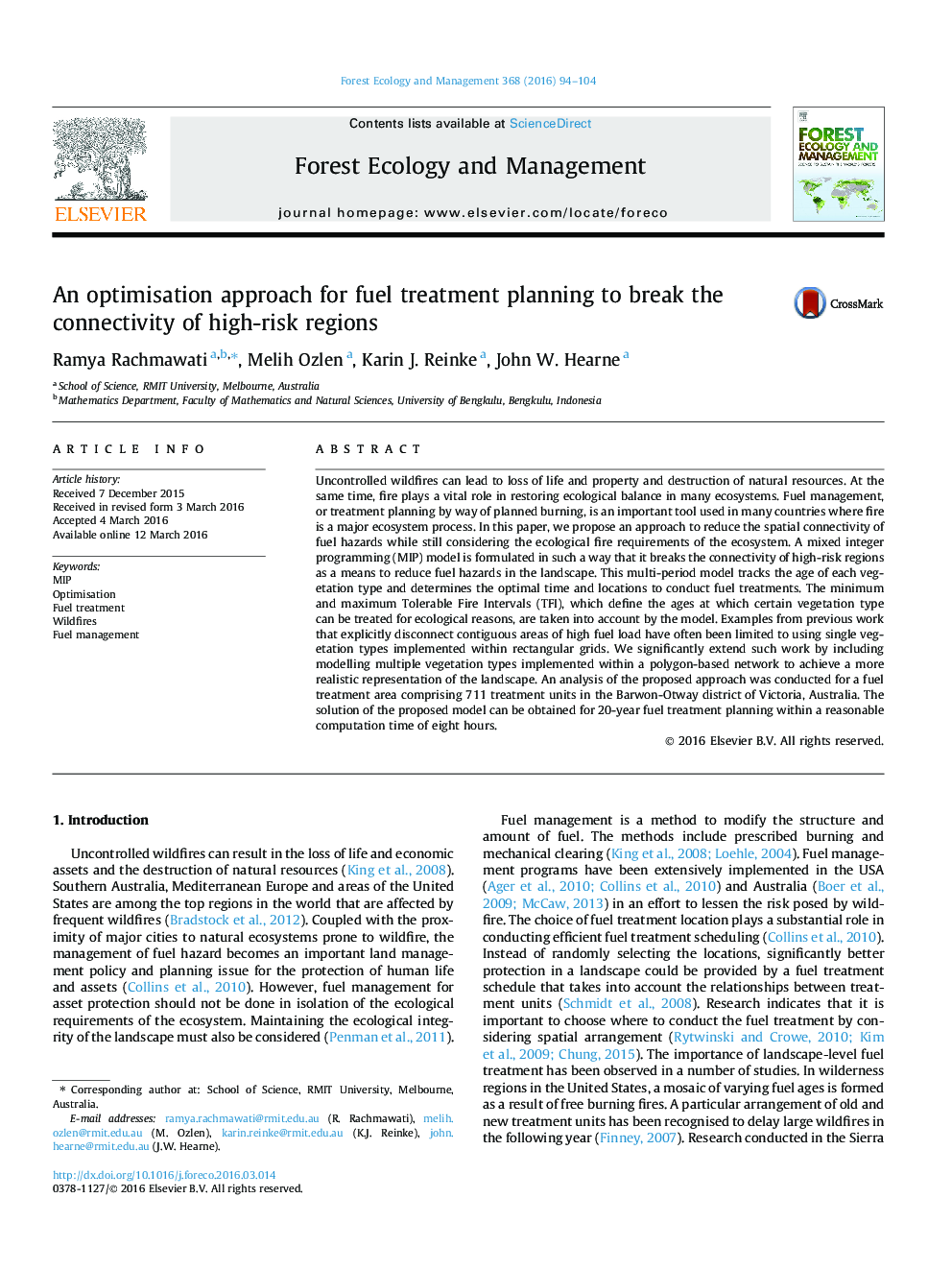| کد مقاله | کد نشریه | سال انتشار | مقاله انگلیسی | نسخه تمام متن |
|---|---|---|---|---|
| 85954 | 159153 | 2016 | 11 صفحه PDF | دانلود رایگان |
• New approach for high fuel load areas fragmentation that uses real landscape data.
• Uses a realistic network representation of the landscape based on polygons.
• Handles multiple-vegetation types co-existing within a single treatment unit.
Uncontrolled wildfires can lead to loss of life and property and destruction of natural resources. At the same time, fire plays a vital role in restoring ecological balance in many ecosystems. Fuel management, or treatment planning by way of planned burning, is an important tool used in many countries where fire is a major ecosystem process. In this paper, we propose an approach to reduce the spatial connectivity of fuel hazards while still considering the ecological fire requirements of the ecosystem. A mixed integer programming (MIP) model is formulated in such a way that it breaks the connectivity of high-risk regions as a means to reduce fuel hazards in the landscape. This multi-period model tracks the age of each vegetation type and determines the optimal time and locations to conduct fuel treatments. The minimum and maximum Tolerable Fire Intervals (TFI), which define the ages at which certain vegetation type can be treated for ecological reasons, are taken into account by the model. Examples from previous work that explicitly disconnect contiguous areas of high fuel load have often been limited to using single vegetation types implemented within rectangular grids. We significantly extend such work by including modelling multiple vegetation types implemented within a polygon-based network to achieve a more realistic representation of the landscape. An analysis of the proposed approach was conducted for a fuel treatment area comprising 711 treatment units in the Barwon-Otway district of Victoria, Australia. The solution of the proposed model can be obtained for 20-year fuel treatment planning within a reasonable computation time of eight hours.
Journal: Forest Ecology and Management - Volume 368, 15 May 2016, Pages 94–104
